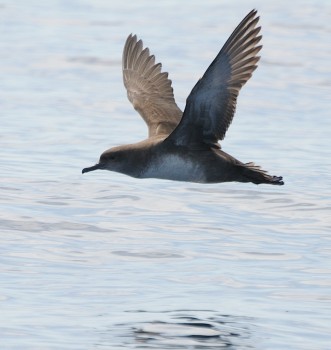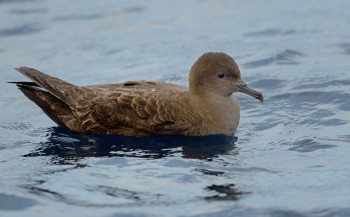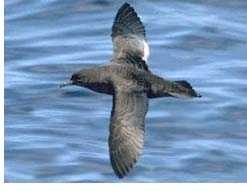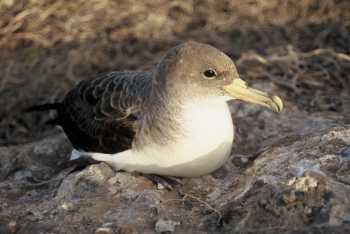Laysan Albatrosses (and other seabirds) on the French Frigate Shoals are at risk from sea-level rise
A 2013 report by Michelle Reynolds (Pacific Island Ecosystems Research Center, U.S. Geological Survey, Hawaii, U.S.A.) and colleagues that considers the likely effects of predicted sea level rise on the breeding seabirds, including ACAP-listed Laysan Abatross Phoebastria immutabilis, of the USA’s French Frigate Shoals in the Northern Pacific is now available on line.
The report’s abstract follows:
Globally, seabirds are vulnerable to anthropogenic threats both at sea and on land. Seabirds typically nest colonially and show strong site fidelity; therefore, conservation strategies could benefit from an understanding of the population dynamics and vulnerability of breeding colonies to climate change. More than 350 atolls exist across the Pacific Ocean; while they provide nesting habitat for many seabirds, they are also vulnerable to sea-level rise. We used French Frigate Shoals, the largest atoll in the Hawaiian Archipelago, as a case study to explore seabird colony dynamics and the potential consequences of sea-level rise. We compiled a unique combination of data sets: historical observations of islands and seabirds, a 30-year time series of population abundance, LiDAR- (light detection and ranging) derived elevations, and satellite imagery. To model population dynamics for ten species at Tern Island from 1980 to 2009, we used the Gompertz model with parameters for the population growth rate, density dependence, process variation, and observation error. We used a Bayesian approach to estimate the parameters. All species increased in a pattern that provided evidence of density dependence. Density dependence may exacerbate the consequences of sea-level rise on seabirds because species that are already near the carrying capacity of the nesting habitat will be limited more than species that still have space for population growth. Laysan Albatross (Phoebastria immutabilis), Great Frigatebird (Fregata minor), Red-tailed Tropicbird (Phaethon rubricauda), Masked Booby (Sula dactylatra), Gray-backed Tern (Onychoprion lunatus), and White Tern (Gygis alba) are likely already at carrying capacity at Tern Island and therefore are most likely to be negatively impacted by sea-level rise. We project 12% of French Frigate Shoals (excluding La Pesrouse Pinnacle) will be inundated with +1.0 m sea-level rise or 32% with +2.0 m. Gray-backed Terns that nest along the coastal perimeters of islands and shrub-nesting species that are habitat limited are especially vulnerable to sea-level rise. However, at Tern Island, seawalls and habitat creation may mitigate projected seabird population declines due to habitat loss. We predict substantial losses in seabird nesting habitat across the low-lying Hawaiian Islands by 2100 and emphasize the need to restore higher elevation seabird colonies.”
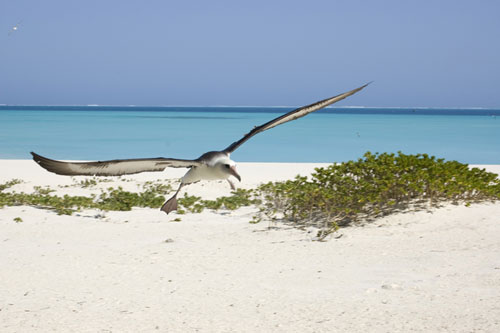
A Laysan Albatross flies over the low-lying shore, photograph by James Lloyd
Click here to access a related publication by Michelle Reynolds.
Selected References:
Hatfield, J., Reynolds, M.H., Seavy, N.E. & Krause, C.M. 2012. Population dynamics of Hawaiian seabird colonies vulnerable to sea-level rise. Conservation Biology 26: 667-678.
Reynolds, M.H., Courtot, K.N., Berkowitz, P., Storlazzi, C.D., Moore, J. & Flint, E. 2015. Will the effects of sea-level rise create ecological traps for Pacific island seabirds? PloS ONE DOI: 10.1371/journal.pone.0136773.
Reynolds, M.H., Courtot, K.N., Krause, C.M., Seavy, N.E., Hartzell, P. & Hatfield, J.S. 2013 (2016). Dynamics of seabird colonies vulnerable to sea-level rise at French Frigate Shoals, Hawai`i. Technical Report HCSU-037. Hilo: Hawai`i Cooperative Studies Unit. 32 pp
Storlazzi, C.D., Berkowitz, P.,Reynolds, M.H. & Logan, J.B. 2013. Forecasting the Impact of Storm Waves and Sea-level Rise on Midway Atoll and Laysan Island within the Papahānaumokuākea Marine National Monument - a Comparison of Passive versus Dynamic Inundation Models. U.S. Geological Survey Open-File Report 2013-1069. 78 pp.
John Cooper, ACAP Information Officer, 11 March 2016
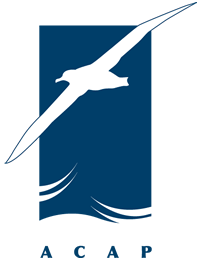
 English
English  Français
Français  Español
Español 